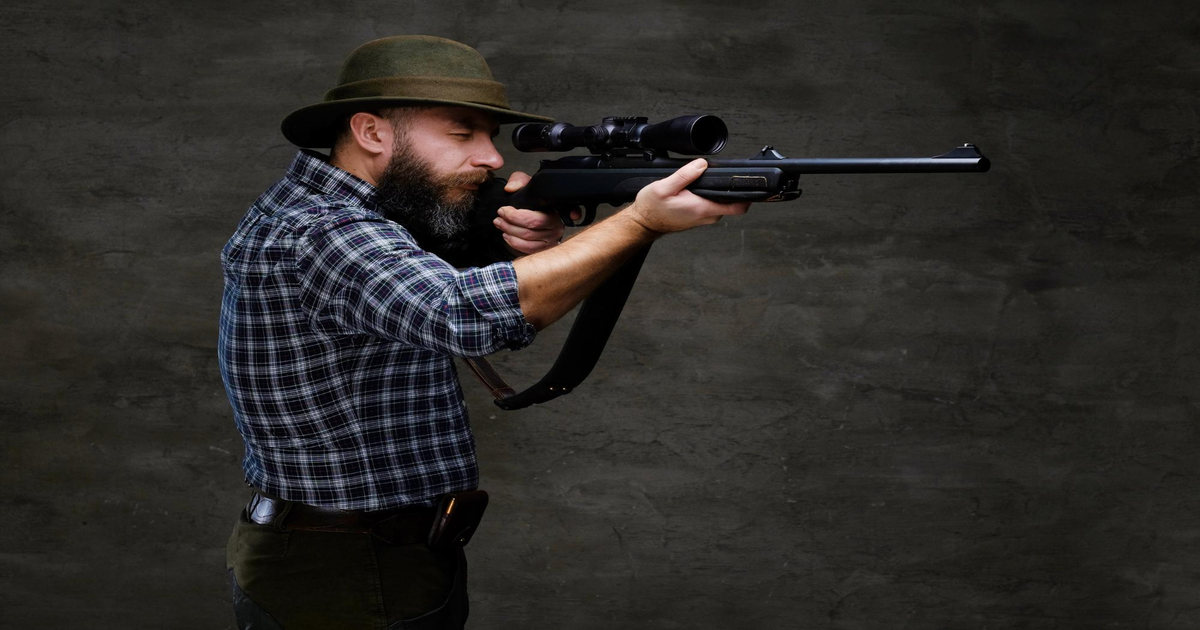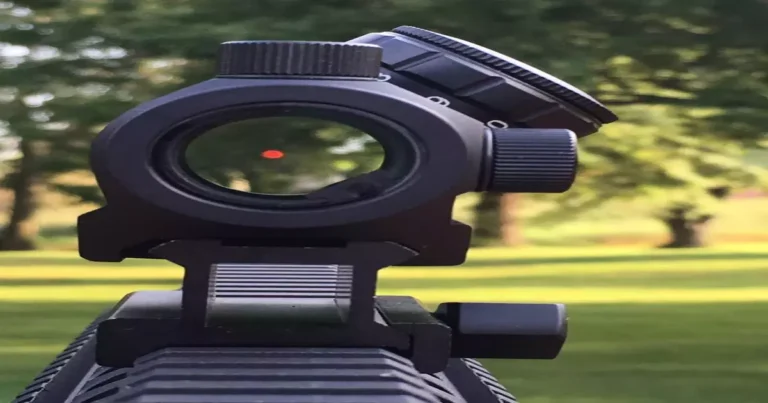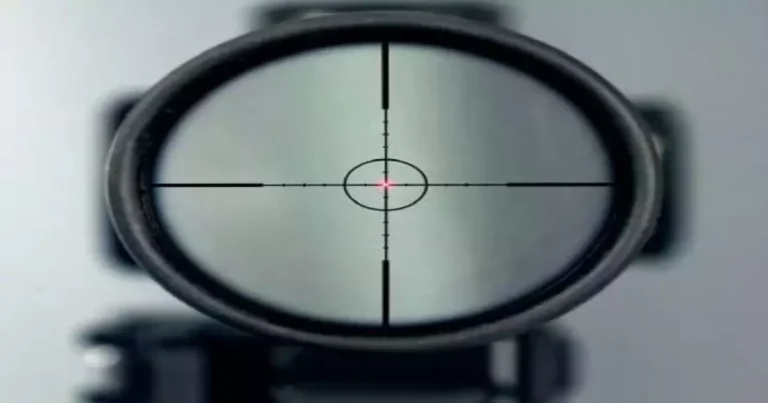Finding the Perfect Red Dot Position: Front Sight Integration
Red dot sights have transformed firearm aiming mechanisms, garnering widespread favor among shooters at every skill tier. Unlike conventional iron sights, these sights employ an illuminated reticle, providing shooters with a swift and instinctive method to lock onto targets. Their surge in favor arises from their straightforwardness, adaptability across different shooting situations, and user-friendliness for novices and experienced marksmen alike due to their Front Sight Integration.
Red Dot Sights: Simplifying Target Acquisition
These sights project an illuminated dot or reticle onto a lens, allowing shooters to place the dot on their target without needing perfect alignment of front and rear iron sights. This innovation significantly reduces the time needed to acquire a sight picture, enabling faster and more accurate shooting.
The Role of Front Sight Integration
While red dot sights offer a simplified aiming solution, their effectiveness can be further enhanced by aligning them with front sights. This integration involves positioning the red dot in coordination with the firearm’s front sight.
Importance of Alignment for Accuracy
Accurate shooting relies on the alignment of the red dot with the front sight. Proper alignment ensures that the point of aim and the point of impact coincide, optimizing accuracy and precision. When the red dot is aligned with the front sight, shooters can achieve consistent and reliable shots, especially in scenarios where rapid target acquisition is crucial.
Advantages of Alignment
- Enhanced Accuracy: Aligning the red dot with the front sight ensures that shooters maintain consistent aim, resulting in improved accuracy.
- Improved Speed: Rapid target acquisition is optimized when the red dot is aligned, allowing for faster shooting without sacrificing precision.
- Versatility: Front sight integration allows shooters to seamlessly transition between using the red dot sight and the iron sights, offering versatility in different shooting situations.

Understanding the Alignment
Should the Red Dot Align with the Front Sight?
Aligning the red dot with the front sight is a subject of debate among shooters, and there are valid arguments both for and against this alignment. Let’s explore the pros and cons to better understand this discussion:
Pros of Aligning Red Dot with Front Sight:
- Consistency in Sight Picture: Aligning the red dot with the front sight creates a consistent sight picture, aiding in maintaining a uniform aiming reference.
- Precision Shooting: For precision shooting, especially at longer distances, aligning the red dot with the front sight can offer enhanced accuracy.
- Improved Transition Between Sights: Aligning the red dot with the front sight allows for seamless transitions between using the red dot and the iron sights, facilitating versatility in shooting scenarios.
Cons of Aligning Red Dot with Front Sight:
- Speed vs. Precision Trade-off: Some shooters prioritize speed over precision. Aligning the red dot with the front sight might slightly slow down the target acquisition process, particularly in scenarios requiring rapid shooting.
- Distance Considerations: At closer ranges, strict alignment might not be as critical, as the parallax-free nature of red dot sights allows for quick and accurate shooting without perfect alignment.
Factors Affecting Alignment:
- Distance to Target: Alignment requirements might vary based on the distance to the target. Longer distances might necessitate more precise alignment for accurate shots.
- Shooting Style: Individual shooting styles can influence alignment preferences. Some shooters prioritize precision, while others focus on speed.
- Personal Preference: Aligning the red dot with the front sight can be a matter of personal preference. Some shooters find it more comfortable and effective, while others might prefer a different alignment for their shooting style.
Optimal Positioning Within the Sight Window:
Determining the ideal placement of the red dot within the sight window is pivotal for maximizing sight picture clarity and efficient target acquisition.
Factors Influencing Optimal Placement:
- Centralized Positioning: Placing the red dot centrally within the sight window ensures a balanced sight picture, allowing for quick target acquisition without excessive eye movement.
- Consistency in Eye Alignment: Aligning the red dot consistently with the shooter’s dominant eye reduces the need for readjustment, enabling faster and more accurate aiming.
Effects of Placement on Sight Picture:
- Clarity and Acuity: Properly positioning the red dot enhances sight clarity, ensuring a sharp and distinct reticle that facilitates precise aiming.
- Ease of Target Acquisition: Optimal placement allows for swift target acquisition, minimizing the time required to align the red dot with the intended target.
- Reduced Parallax Error: Correct placement mitigates parallax error, maintaining the accuracy of the red dot even with slight shifts in the shooter’s viewing angle.
Adjusting for Individual Comfort and Shooting Style:
- Personal Preference: Shooters may experiment to find the placement that feels most comfortable and intuitive for their aiming process.
- Adaptability to Shooting Scenarios: Different shooting scenarios might warrant slight adjustments in red dot placement for optimal performance. For instance, rapid-fire situations might benefit from a slightly lower or higher placement to accommodate faster sight acquisition.
Techniques for Determining Optimal Placement:
- Trial and Adjustment: Shooters are encouraged to experiment with different placements during practice sessions, noting the position that yields the best balance of clarity and speed in acquiring targets.
- Feedback and Consistency: Seeking feedback from experienced shooters or trainers can provide valuable insights into optimizing red dot placement. Consistency in positioning is key to developing muscle memory and improving shooting proficiency.
Necessity of Front Sights with Red Dots:
Do You Need a Front Sight with a Red Dot?
Incorporating a front sight with a red dot can offer various advantages, but whether it’s necessary depends on shooting preferences, scenarios, and the specific firearm setup.
Benefits of Using a Front Sight with a Red Dot:
Backup Iron Sights: Front sights serve as backup aiming devices in case of red dot failure or battery depletion, ensuring shooters can maintain accuracy without dependence solely on electronic optics.
Enhanced Accuracy and Alignment: When aligned properly, combining a front sight with a red dot can optimize accuracy by providing a consistent reference point, especially for precise shots at varying distances.
Transitional Ease: Utilizing both front sights and red dots allows for seamless transitions between optics, catering to different shooting scenarios without the need for adjustments.
Training Consistency: Incorporating front sights encourages shooters to maintain consistent shooting techniques, particularly for those accustomed to using iron sights, aiding in skill retention and adaptation.
Instances Where Front Sights Might Not Be Necessary or Recommended:
- Personal Preference: Some shooters may feel comfortable relying solely on the red dot, especially in situations where the likelihood of optic failure is minimal, such as casual shooting or controlled environments.
- Speed-Centric Scenarios: In fast-paced, close-quarters situations where speed takes precedence over precision, some shooters may opt to forego front sights to streamline target acquisition.
- Specific Firearm Configurations: Certain firearms or setups, such as those designed primarily for competitive shooting or specialized tactical applications, might not require front sights due to their specific intended use and configuration.
Considerations for Optimal Setup:
- Balancing Red Dot Dependency: Assessing the level of reliance on the red dot for aiming and the need for a backup system based on the shooting environment and intended use of the firearm.
- Training and Adaptation: Shooter proficiency and adaptability play a significant role in determining whether front sights should be integrated with red dots. Regular training and familiarity with both systems can influence the need for front sights.
Understanding the benefits and situations where front sights complement red dots provides insight into the considerations for shooters when deciding on their optic setups.
Techniques for Aligning Red Dot with Front Sight:
Ensuring Alignment for Accuracy:
Achieving precise alignment between the red dot and front sight is pivotal for accuracy in shooting. Here are several methods and training exercises to ensure consistent and accurate alignment:
Methods for Alignment:
- Visual Confirmation:
- Co-Witnessing: Utilize the technique of co-witnessing, aligning the red dot with the iron sights to ensure both systems point to the same spot. This method helps confirm alignment and consistency.
- Zeroing Process:
- Bore Sighting: Begin by bore sighting, ensuring the red dot is aligned with the bore axis. This initial alignment aids in setting a baseline for further adjustments.
- Adjustment Iterations: Gradually adjust the red dot to align with the front sight by making slight increments and confirming alignment through consistent sight pictures.
- Consistent Shooting Practice:
- Dry Fire Exercises: Practice dry firing while focusing on maintaining alignment between the red dot and front sight. This allows for repetitive practice without ammunition, emphasizing muscle memory for proper alignment.
- Live Fire Drills: Conduct live fire drills focusing on acquiring targets swiftly while maintaining precise alignment between the red dot and front sight.
Training Exercises to Improve Alignment and Consistency:
- Dot Tracking Drills:
- Create drills focusing on tracking the red dot movement in relation to the front sight. These exercises enhance hand-eye coordination and help in maintaining alignment during dynamic shooting scenarios.
- Target Transitions:
- Engage in drills involving transitioning between multiple targets while ensuring the red dot consistently aligns with the front sight. This exercise hones alignment skills in different shooting scenarios.
- Focus on Sight Picture:
- Practice achieving a clear and consistent sight picture with the aligned red dot and front sight. Pay attention to the relationship between the two sights to ensure proper alignment before taking shots.
Importance of Consistency:
Consistency in alignment is paramount for accuracy. Regular practice and deliberate focus on alignment techniques develop muscle memory, enabling shooters to achieve reliable and precise alignment between the red dot and front sight in various shooting situations.
By incorporating these methods and training exercises into regular shooting practice, shooters can enhance their alignment skills, improving accuracy and consistency when utilizing red dot sights with front sight integration.
Practical Considerations and Recommendations:
Should Your Red Dot Line Up Exactly with the Front Sight?
The discussion surrounding perfect alignment versus functional alignment of the red dot with the front sight often leads shooters to ponder the practical implications in real-world scenarios. Let’s explore the nuances and practicality of both approaches:
Perfect Alignment vs. Functional Alignment:
- Perfect Alignment: This refers to precisely aligning the red dot with the front sight, ensuring they are perfectly superimposed. While this alignment might offer theoretical advantages in terms of consistency and precision, achieving and maintaining it can be challenging, especially in dynamic shooting scenarios.
- Functional Alignment: Functional alignment prioritizes practical usability over perfect alignment. It involves ensuring that the red dot and front sight are aligned sufficiently for effective and efficient shooting. This approach acknowledges that minor misalignment might not significantly impact accuracy within certain parameters.
Nuances in Real-World Scenarios:
- Speed vs. Precision: In scenarios requiring rapid target acquisition and engagement, functional alignment might be more practical. It allows shooters to acquire targets quickly without the strict need for perfect alignment, optimizing speed without compromising accuracy within practical ranges.
- Adaptability in Dynamic Environments: Real-world shooting situations often demand quick decisions and adaptability. Functional alignment caters to these scenarios, allowing shooters to focus more on the target than on achieving precise alignment, enhancing overall shooting performance.
Practical Implications:
- Training and Familiarity: Perfect alignment might require extensive training and consistent practice to maintain. Functional alignment, on the other hand, offers a more forgiving approach that aligns well with varying shooting styles and levels of expertise.
- Personal Preference and Comfort: The choice between perfect and functional alignment ultimately boils down to personal preference and comfort. Shooters are encouraged to experiment and find the alignment approach that suits their shooting style, considering both accuracy and speed requirements.
While perfect alignment between the red dot and front sight might seem ideal in theory, functional alignment offers a more practical approach in real-world shooting scenarios. The focus should be on achieving an alignment that balances precision with usability, allowing shooters to perform effectively across different shooting situations. Understanding the trade-offs and considering individual shooting needs helps in making informed decisions regarding red dot and front sight alignment.
Addressing Common Concerns and FAQs
Answering Common Queries: “Should My Red Dot Line Up with the Front Sight?”
The alignment of the red dot with the front sight is a frequent topic of discussion among shooters, often leading to questions about its necessity and impact on shooting performance.
Understanding Alignment: Importance and Considerations
- Precision vs. Speed: One common query revolves around whether aligning the red dot with the front sight significantly impacts accuracy. The answer often lies in the balance between precision and speed. Perfect alignment can enhance precision but might potentially sacrifice speed in fast-paced shooting scenarios.
- Distance Considerations: Another query pertains to the necessity of perfect alignment across different distances. While aligning the red dot with the front sight might offer benefits at shorter distances, it might not be as crucial at longer ranges where minor misalignment may not substantially affect accuracy.
- Personal Preference: The decision to align the red dot with the front sight often boils down to individual preferences. Some shooters prioritize a clear sight picture for faster target acquisition, while others value consistent alignment for enhanced precision.
Clarifying Misconceptions or Doubts Related to Red Dot and Front Sight Integration
- Myth: Perfect Alignment is Always Necessary: There’s a misconception that perfect alignment between the red dot and front sight is a mandatory requirement for accurate shooting. While alignment can be beneficial, minor misalignment might not significantly affect accuracy within certain parameters.
- Misunderstanding Versatility: Some shooters question the necessity of aligning when red dot sights are designed for quick and intuitive aiming without strict alignment requirements. Clarifying that alignment is a preference rather than an absolute necessity helps in understanding the versatility of red dot sights.
- Adaptability in Shooting Scenarios: Addressing doubts about the adaptability of red dot sights without perfect alignment helps in understanding their versatility. Red dot sights excel in various shooting scenarios, even without precise alignment, owing to their inherent design for quick target acquisition.
The key takeaway is that while aligning the red dot with the front sight has its advantages in terms of consistency and precision, it’s not a strict requirement for effective shooting.
Conclusion
The integration of red dot sights with front sights offers shooters a choice between perfect alignment and functional alignment. Throughout this exploration, we’ve uncovered the intricacies, considerations, and practical implications of aligning the red dot with the front sight.
Shooters can opt for either perfect alignment or functional alignment based on their preferences, shooting styles, and practical needs. While perfect alignment may offer precision, functional alignment prioritizes usability and adaptability in real-world shooting scenarios, especially regarding speed and target acquisition. This choice is subjective and varies based on individual preferences, training levels, and comfort with sighting systems.
Recommendations include experimenting with both alignment approaches and extensive practice to determine the best method for individual shooting requirements. Understanding the adaptability of red dot sights without strict alignment fosters versatility in different shooting scenarios. Continuous improvement in shooting skills and familiarity with sighting systems is crucial for optimizing alignment and overall shooting performance.
Achieving a balance between precision and usability allows shooters to excel in various scenarios while benefiting from red dot sight integration with front sights. The key is to explore alignment methods, acknowledge trade-offs, and find an approach that maximizes effectiveness and comfort.



